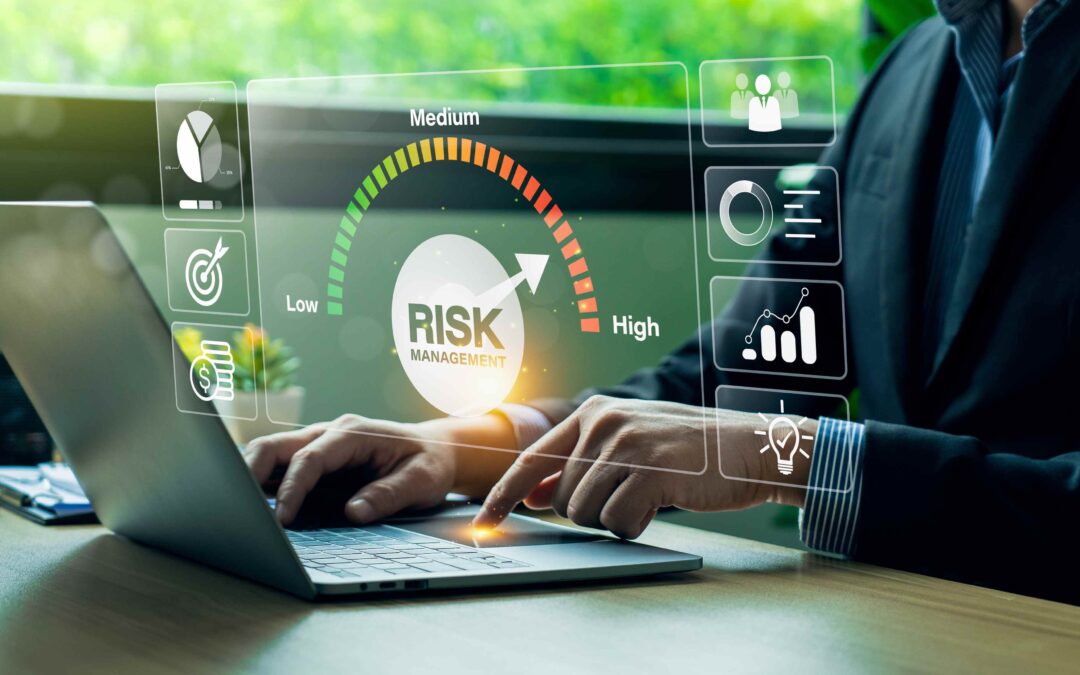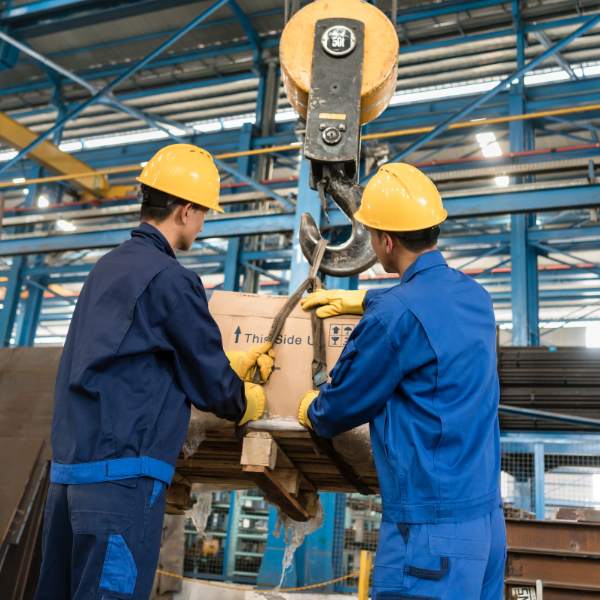What EU-OSHA's Seminar Means for Human Factors in Digital Workplaces.
What You Really Need to Know
Introduction
On October 10th, 2025, Europe’s top safety experts will gather for a crucial online seminar hosted by the European Agency for Safety and Health at Work (EU-OSHA). The topic: “Navigating the Human Impact of Digital Transformation.” This event is more than just a webinar; it is a clear signal of where European safety regulation and enforcement are heading, and every Irish business needs to pay close attention.
The rapid acceleration of AI, automation, and remote work is revolutionising how we do business, bringing incredible efficiencies. But this digital shift also creates a new landscape of risks not just physical, but psychological and emotional. The “human impact” of this transformation is now a primary concern for workplace safety authorities.
For Irish business leaders, the question is urgent: Is your health and safety framework equipped to manage the human cost of technology? This article breaks down the key themes of the upcoming EU-OSHA focus and provides a clear action plan to ensure your business is not left behind.
The New Ergonomics MSD Risks Beyond the Office Chair
The core message from the EPA is unambiguous. While Ireland’s air quality generally meets the current EU legal standards, it frequently fails to meet the more stringent, health-based guidelines set by the World Health Organization (WHO). The main culprit identified is PM2.5, a cocktail of microscopic particles originating primarily from the domestic burning of solid fuels like coal, turf, and wood.
One of the most immediate impacts of the digital shift has been the explosion of remote and hybrid work. While offering flexibility, it has also transferred the work environment into hundreds of thousands of individual homes, each with a unique ergonomic setup.
The Challenge of the Home Office:
Musculoskeletal Disorders (MSDs) injuries affecting the back, neck, shoulders, and wrists are a leading cause of work-related illness. The risk of MSDs multiplies when employees work for long hours from unsuitable setups like kitchen tables or sofas.
- Your Legal Duty Extends Home: It is critical to remember that under Irish law, an employer’s ‘duty of care’ extends to the home workspace. As the Health and Safety Authority (HSA) clearly outlines, employers are still responsible for ensuring home workstations are assessed and are ergonomically sound.
Beyond the DSE Assessment: A simple tick-box Display Screen Equipment (DSE) assessment is no longer enough. A proactive approach involves providing training on setting up a proper workstation, encouraging regular movement and breaks, and having a clear process for employees to report discomfort before it becomes a chronic injury.
A Nationwide Issue It’s Not Just a City Problem
A crucial takeaway from the report is that this is not an issue confined to major urban centres like Dublin or Cork. The EPA’s monitoring has shown that the highest levels of particulate pollution are frequently recorded in towns and villages across the country. You can monitor this in real-time using the official Air Quality Index for Ireland. This means that businesses operating anywhere in Ireland need to be acutely aware of the local air quality and its potential impact on their staff particularly on employees with pre-existing health conditions.
Authoritative Link: You can read the full press release from the Environmental Protection Agency (EPA) on their website to understand the specifics of their findings.
Agency (EPA) on their website to understand the specifics of their findings.
The Hidden Hazard: Managing Digital Stress & Burnout
Perhaps the most significant “human impact” of digitalisation is the rise in psychosocial risks. The technology that enables us to work from anywhere also creates the pressure to be available everywhere, at all times.
The ‘Always-On’ Culture:
The integration of Artificial Intelligence, robotics, and algorithmic management is no longer science fiction; it is a reality in many Irish workplaces, from warehouses to professional services.
New Human-Machine Interactions:
The risks are more complex than just physical safety around a robot. The EU-OSHA event will focus on the nuanced human-machine relationship.
- Algorithmic Management: When an employee’s tasks, performance, and even schedule are dictated by an algorithm, it can lead to intense pressure, a loss of autonomy, and significant stress. Your risk assessments need to start considering the psychological impact of these systems.
- Trust and Transparency: How are decisions made by AI? Is the process transparent? A lack of understanding or perceived fairness in how AI-driven tools operate can create a culture of mistrust and anxiety among staff.
Authoritative Link: You can learn more about the upcoming seminar and its key themes directly from the EU-OSHA event page.
The Strategic Response ISO 45001 for a Digital World
Reacting to these diverse digital challenges one by one is an inefficient and risky strategy. A proactive, systematic approach is needed, and the global standard for this is ISO 45001, the framework for an Occupational Health and Safety Management System.
The ISO 45001 framework is perfectly suited to this new era because it is not a static checklist. Its ‘Plan-Do-Check-Act’ cycle forces your organisation to:
- Plan: Proactively identify these emerging digital risks ergonomic, psychosocial, and AI-related as part of your formal risk assessment process.
- Do: Implement robust, documented control measures, such as new remote work policies, mental health support programmes, or transparent guidelines for AI usage.
- Check: Continuously monitor the effectiveness of these controls through staff surveys, health surveillance, and performance metrics.
- Act: Use the data and feedback to continually improve your system, ensuring it remains effective as technology continues to evolve.
Implementing this standard, a process certified in Ireland by the NSAI, proves your commitment to a human-centred approach to digital transformation.
Don’t Wait for the Future to Manage its Risks
- The digital transformation of work is happening at lightning speed. The upcoming EU-OSHA seminar is a clear indicator that regulatory focus on the “human impact” of this change is intensifying.
For Irish businesses, the time to act is now. A proactive approach to managing digital risks is not just about compliance; it is about building a resilient, healthy, and productive workforce that can thrive in the new world of work.
If you are ready to assess your organisation’s digital-readiness and explore how implementing an ISO 45001 management system can provide your strategic roadmap, contact the expert team at Acornstar.

The High Cost of Gravity Why HSENI is Targeting Falls in Construction and Farming
The High Cost of Gravity Why HSENI is Targeting Falls in Construction and Farming What You Really Need to Know In the high-risk industries of construction and agriculture, the most persistent and deadly hazard remains the oldest one: gravity. Despite stringent...

Safety First What the New EU Toy Safety Regulation Means for UK and Irish Businesses
Safety First What the New EU Toy Safety Regulation Means for UK and Irish Businesses What You Really Need to Know Introduction On 13 October 2025, the Council of the EU approved its position on a new Toy Safety Regulation that will replace Directive 2009/48/EC. The...

What the ISO 9001 and ISO 14001 Revisions Mean
The Future of HSEQ What the ISO 9001 and ISO 14001 Revisions Mean for UK and Irish Businesses What You Really Need to Know Introduction In the realm of Health, Safety, Environment, and Quality (HSEQ), standing still is never an option. The global standards that...

The AI Revolution in HSEQ What the EU’s “AI Factories” Mean for UK and Irish Businesses
The AI Revolution in HSEQ What the EU’s AI Factories Mean for UK and Irish Businesses What You Really Need to Know Introduction Artificial Intelligence (AI) is rapidly moving from a buzzword to an essential operational tool. A recent announcement from the European...

All-Island Alert Safety Authorities Launch Campaign Targeting Deadly Falls
All-Island Alert Safety Authorities Launch Campaign Targeting Deadly Falls What You Really Need to Know Introduction In a major cross-border initiative, the Health and Safety Authority (HSA) in Ireland and the Health and Safety Executive for Northern Ireland (HSENI)...

The Trojan Horse on Wheels Why a UK Scooter Recall is a Major Safety Warning for Irish Businesses
The Trojan Horse on Wheels. Why a UK Scooter Recall is a Major Irish Safety Warning What You Really Need to Know Lessons from a Critical Electrical Safety Failure In the world of workplace safety, the most serious threats often arrive in the most unassuming packages....

A Shock to the System Why the Anker Recall is an Urgent Electrical Safety Warning for Every Irish Business
Fire Hazard Anker Power Bank Recall is a Workplace Wake Up Call What You Really Need to Know The Shocking Truth About Power Bank Hazards In the world of tech accessories, few names are as recognised and trusted as Anker. That is why the recent major recall of their...

Ireland’s New Emergency Network Is Your Lone Worker Safety Plan Still Fit for Purpose?
National Safety Boost Irish Government Launches New Emergency System What You Really Need to Know Enhancing Emergency Services Response Across Ireland In a major step forward for national safety, the Irish Government has announced the launch of a new, state-of-the-art...

Beyond the Award Are You a ‘Leading Light’ in Driving for Work Safety?
Why the EPA’s 2025 Air Quality Report is a Wake-Up Call for Irish Businesses What You Really Need to Know Introduction Every year, the Road Safety Authority (RSA) shines a spotlight on the individuals, communities, and organisations making a real difference on our...
URGENT New Irish Safety Laws for Manual Handling & Work at Height Effective November 1st
Why the EPA’s 2025 Air Quality Report is a Wake-Up Call for Irish Businesses What You Really Need to Know Introduction In a significant development for workplace safety in Ireland, Minister of State Alan Dillon has signed major new regulations into law, updating the...





